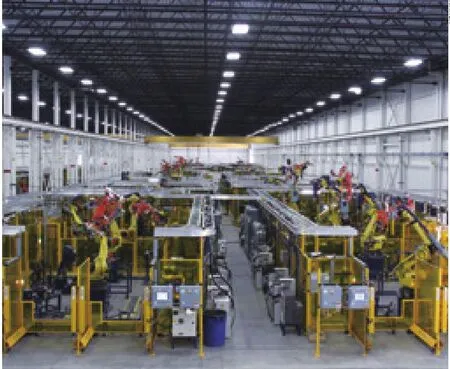LNG Receiving Terminal
2016-05-31
LNG Receiving Terminal
Ocean-bound ship Methane Spirit unloads liquefied natural gas (LNG) for the first time at the Sinopec LNG receiving terminal of the Tieshan Harbor in Beihai, Guangxi Zhuang Autonomous Region, on April 19.
The facility is Sinopec’s first LNG receiving terminal in southwest China.
Pumping Cash
The People’s Bank of China (PBOC), the country’s central bank, pumped 162.5 billion yuan ($25 billion) into 18 financial institutions in open market operations via a medium-term lending facility (MLF) on April 18.
MLF is a tool introduced in 2014 to help commercial and policy banks maintain liquidity by allowing them to borrow from the central bank, using securities as collateral.
It was the second time that the PBOC used the tool in April to “guide financial institutions in boosting support for key areas and vulnerable links in the national economy.”
A total of 83.5 billion yuan ($13.94 billion) is earmarked for the three-month MLF and 79 billion yuan ($12.25 billion) for the sixmonth MLF, at interest rates of 2.75 percent and 2.85 percent, respectively. The interest rates remained the same as in the previous operation.
To bolster the economy, China has adopted a more pro-growth stance, cutting benchmark interest rates and banks’ reserve requirement ratio multiple times since 2014.
Hot Property
China’s property market continued to show signs of recovery in March, with most of the surveyed major cities reporting month-on-month rises in new home prices.
Of the 70 large and mediumsized cities surveyed in March, 62 saw new home prices increase month on month, up from 47 in the previous month, the National Bureau of Statistics said on April 18.
On a yearly basis, 40 cities posted new home price increases and 29 reported falls in March, compared with 32 and 37 in February.
New home prices have soared 62.5 percent since last year in the southern city of Shenzhen, the sharpest increase last month among all the major cities, followed by Shanghai, Nanjing and Beijing, where prices surged 30.5, 17.8 and 17.6 percent, respectively.
Prices for existing homes also continued to pick up in March, with 54 cities reporting higher month-onmonth prices and 13 reporting lower prices.
China’s housing market started to recover in the second half of 2015, after cooling for more than a year.
Bond Surges
The value of bonds issued in China in March hit 4 trillion yuan ($616 billion), nearly triple the figure for the same period last year, the PBOC said on April 15.
The value in March also more than doubled February’s sum of 1.9 trillion yuan ($292 billion), according to the PBOC.
The total balance of the bond market reached 51.9 trillion yuan ($8 trillion) by the end of March.
The surge in bond issuance suggests it is becoming easier for Chinese firms to find affordable financing. Financing costs for companies through bond issuance have significantly reduced since 2014, according to the PBOC.
The central bank said on April 14 that China will not limit investments by foreign central banks and similar institutions in the Chinese inter-bank foreign exchange and bond markets, as long as they abide by Chinese laws and regulations and register their investments.
Less Gov’t Spending
China’s Central Government will this year spend less on overseas visits, vehicles and receptions, popularly known as the “three public spendings,” said the Ministry of Finance on April 12.
The Central Government will spend 6.31 billion yuan ($970 million) on the three in 2016, a slight decrease of 6 million yuan ($0.93 million) from last year.
This year’s budget includes 2.027 billion yuan ($312 million) for overseas travel, 3.441 billion yuan ($533 million) for government vehicles and 842 million yuan ($131million) for receptions.
In 2015, the Central Government spent 943 million yuan ($146 million) less on these items compared with the budget.
Spending in these areas has long been a controversial issue because of misuse of public money.
The Central Government first published these figures in 2011 and has been working to increase transparency ever since.
Most Trademarks
China remains first in the world in terms of the number of trademark applications, official data showed on April 12.
In 2015 alone, China received more than 2.8 million trademark applications, four times the number in 2008. China has led the world in the number of trademark applications since 2002, according to the State Administration for Industry and Commerce (SAIC).
The SAIC had received more than 19.1 million trademark applications as of March this year, and the number of valid trademarks registered in China totaled 10.7 million by the end of March.
Liu Junchen, Vice Minister of the SAIC, said at a press conference on April 12 that the surge in trademarks was a result of China’s continued efforts to protect intellectual property.
However, Liu admitted that only a small proportion of Chinese brands are recognized in the international market as Chinese enterprises still rely too much on cost advantages.
Liu said that in the future, the SAIC will continue to safeguard intellectual property, streamline registration procedures and toughen penalties for trademark infringement.
VC Decrease
Investment in Chinese companies backed by venture capital (VC) declined in the first quarter of 2016, a new report has shown.
Economic concerns and a decline in global valuations have seen investors take a cautious, selective approach as the first quarter of this year saw $25.5 billion invested across 1,829 deals worldwide, down from $27.7 billion and 1,907 deals in the last quarter of 2015, according to the report by accounting firm KPMG and consulting firm CB lnsights.
While the number of deals in China increased slightly from 78 in the fourth quarter of 2015 to 85, investment in the same time frame declined 45 percent to $4 billion, around 40 percent of the record $10.2 billion set in the third quarter of 2015.
With most venture capital flowing to the service sector, a two-track economy is establishing itself in China.
Traditional industries need to adjust to the realities of a slowdown while industries focusing on highervalue activities, including services, technology, healthcare and education seem very optimistic, the report said.
“In the future, we expect to see more buyout activities and consolidation in China. We also expect to see a lot more corporates setting up VC arms to make venture-type investments in order to enter the game and follow the lead of companies like Baidu, Alibaba and Tencent,”said Lyndon Fung, a senior KPMG manager in China.
Low-Carbon Airport
An airliner enters the landing slot guided by a new-energy car on April 19 at Pudong International Airport in Shanghai.
The airport began to replace fuel vehicles with new-energy ones from that day to create a low-carbon airport.

U.S. Corporation Purchased
The picture shows a test range of U.S. industrial robot manufacturer Paslin in Warren, the United States, on April 18. Chinese company Wanfeng Technology Group acquired a 100-percent stake in the industrial robot manufacturer for $300 million.

